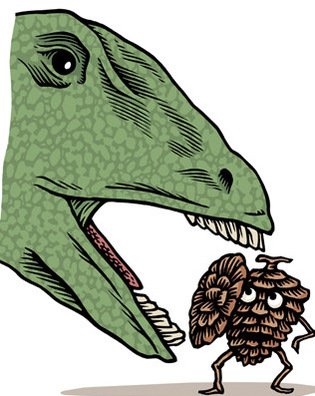 loading
loading
FindingsThe Jurassic fiber-rich diet Gregory NemecView full image
Whenever plant-eating dinosaurs got the munchies about 200 million years ago, conifer needles and cones were favorite menu items. But as these and other animals evolved the size and ability to reach ever higher in search of snacks, the ancestors of pines, spruces, and other modern species faced a problem: they were losing too many seeds to supersized gourmands. “The earliest conifers didn’t have the robust cones we’re familiar with today,” says paleobotanist Andrew B. Leslie, a postdoctoral research fellow at the environment school. Then as now, conifers had two kinds of cones—short-lived male cones that produce pollen and longer-lasting female cones that produce seeds. When these trees first appeared, about 300 million years ago, both cone types were small and thin, almost indistinguishable. Both were also easy to eat. That remained the status quo for about 100 million years, but then, says Leslie, “there was a fork in the evolutionary road. The female cones got bigger and fatter.” The main driver of this expansion was an “increasingly hostile biotic world.” In other words, the large, rigid female cones in today’s woods developed to protect their seeds from the huge vegetarians of the Jurassic and Cretaceous. Leslie documented the trend toward bigger, armored cones by measuring fossils in museum collections and the scientific literature and then comparing his findings with the cone morphology of conifers today. “The number and size of the seeds inside the cones didn’t change much over time,” he says. “The increase was in the size of the scales that make up each cone and how closely packed together they were.”
The comment period has expired.
|
|